Union Pacific Read online
Copyright © 2009 by Zane Grey, Inc.
First Skyhorse Publishing edition published 2015 by arrangement with Golden West Literary Agency
An earlier version of this work appeared under the title The U.P. Trail. Copyright © 1918 by Zane Grey. Copyright © renewed 1945 by Lina Elise Grey. Copyright © 2008 by Zane Grey, Inc., for restored material.
All rights reserved. No part of this book may be reproduced in any manner without the express written consent of the publisher, except in the case of brief excerpts in critical reviews or articles. All inquiries should be addressed to Skyhorse Publishing, 307 West 36th Street, 11th Floor, New York, NY 10018.
Skyhorse Publishing books may be purchased in bulk at special discounts for sales promotion, corporate gifts, fund-raising, or educational purposes. Special editions can also be created to specifications. For details, contact the Special Sales Department, Skyhorse Publishing, 307 West 36th Street, 11th Floor, New York, NY 10018 or [email protected].
Skyhorse® and Skyhorse Publishing® are registered trademarks of Skyhorse Publishing, Inc.®, a Delaware corporation.
Visit our website at www.skyhorsepublishing.com.
The name Zane Grey is a registered trademark with the U. S. Patent and Trademark Office and cannot be used for any purpose without express written permission.
10 9 8 7 6 5 4 3 2 1
Library of Congress Cataloging-in-Publication Data is available on file.
Cover design by Brian Peterson
Print ISBN: 978-1-63450-434-8
Ebook ISBN: 978-1-5107-0044-4
Printed in the United States of America
. . . When I think how the railroad has been pushed through this unwatered wilderness and haunt of savage tribes,—how at each stage of the construction roaring, impromptu cities, full of gold and lust and death, sprang up and then died away again, and are now but wayside stations in the desert; how in these uncouth places Chinese pirates worked side by side with border ruffians and broken men from Europe, gambling, drinking, quarrelling and murdering like wolves;—and then when I go on to remember that all this epical turmoil was conducted by gentlemen in frocks, and with a view to nothing more extraordinary than a fortune and a subsequent visit to Paris, it seems to me as if this railway were the one typical achievement of the age in which we live, as if it brought together into one plot all the ends of the world and all the degrees of social rank, and offered to some great writer the busiest, the most extended, and the most varied subject for an enduring literary work. If it be romance, if it be contrast, if it be heroism that we require, what was Troy to this?
—Robert Louis Stevenson
Foreword
by Jon Tuska
It was stories that Zane Grey heard told by his friend and guide, Al Doyle, about the building of the Union Pacific Railroad that inspired him in late 1916 to attempt what would be his first historical novel. He worked out an elaborate outline of the book he intended to write, detailing characters, events, and the themes he wanted to incorporate. For all of his enthusiasm for the subject, he was constrained by an ambivalence about the triumphalism usually attached to narrating epic historical events from American frontier history. Early on he noted about his character, the mountain man and trapper, Slingerland: “the beginning and end of book, his point of view. Beauty, lonesomeness, silence, wildness!” He also reminded himself at the beginning of the outline: “Last page—the Indian’s setting sun.”
Contrasting this outline with his holographic manuscript, Grey appears to have written disparate scenes having to do with various parts of the story somewhat out of linear sequence, then added new scenes and changed others. The problem for him became that under the inspiration and emotion of writing these scenes they did not always adhere closely to his narrative outline, so that transitions between scenes became awkward. Also in the writing of his story, the book became much longer than he had anticipated it would be. So it was a large, diffuse, and even at times confusing manuscript that he sent to Ripley Hitchcock, his editor at Harper & Bros. From his home in Lackawaxen, Pennsylvania, accompanying his submission, Grey wrote to Hitchcock:
My dear Critic and Friend:
In the light of my quotation from Stevenson it may be presumptuous for me to aspire to tell the story of the building of the Union Pacific Railroad.
But many a night by the camp-fire on the starlit desert have I listened to my old guide, Al Doyle, while he recounted his experiences as teamster, grader, spiker, and fighter during the construction of that great work. It is as though I had lived through the blood and lust and death, the “epical turmoil,” the labor of giants, the heroism and sacrifice of this wildest time in the opening of the West.
Your love of the West and your early travels there and your study of historical frontier days, from which I have profited, have been strong factors in my undertaking this book; and they, like Stevenson’s noble words, have made me see the wonder, the dignity, the importance of the subject.
For the romance, for the inspiration, I have my own love of the wild desert, plain, and mountain; I have Doyle’s stories of sudden death and terrible lust and alluring gold—unforgettable stories; and it seems as though all the labor and violence and havoc of those years have become embodied in my imagination.
So here I give you my book—for which I have written all the others—and I do it with hope and dread and fear and yet with joy.
Faithfully,
Zane Grey
As was usual with Ripley Hitchcock, given a Zane Grey manuscript, he set about rewriting whole sections, altering the sequence of events and what happened to characters. To give but one example: In Grey’s manuscript Warren Neale fights with the reprobate gambler Durade and brutally kills him. Hitchcock altered this scene and had Durade survive the fight, although fundamentally maimed. Grey accepted these many changes, although they made the story almost as much Hitchcock’s as his own, because it was his objective to rise to a higher plane of literature and he was convinced that Hitchcock’s editorial contribution could help him do it. After all, Ripley Hitchcock had been Stephen Crane’s editor. Harper & Bros. sold a condensed section of the Hitchcock version of the novel to Blue Book, a prestigious monthly pulp fiction magazine, where it appeared under the title “The Roaring U.P. Trail” in eight installments, from May 1917 to December 1917.
Grey’s ambition to write strictly psychological fiction in the future, rather than Western stories, would be altered by the critical praise in response to what Harper & Bros. titled The U.P. Trail. Grey wrote in his diary:
My power and my study and passion shall be directed to that which already I have written best—the beauty and color and mystery of great spaces, of the open, of Nature in her wild moods. This decision has been a relief.
To Ripley Hitchcock he wrote on February 20, 1918:
Much good has come to me, in the way of significant appreciation, since The U.P. Trail was published. It is like wine.
I do not know what the critical reception would have been had Harper & Bros. published Grey’s historical novel as he wrote it. One thing is certain. His version contains scenes of unique power and images that will stay with you long after reading it. There is also a psychological depth to several of the characters that was not customary in Grey’s fiction prior to this novel, especially in the depiction of Allie Lee, following her survival of an attack by Sioux Indians and in her captivity with Durade and her later relationship with her biological father. Moreover, despite the occasional awkwardness in transitions, there is an elemental power in this narrative that was compromised, if not lost altogether, in the Ripley Hitchcock version. For his part Grey would not revise his view of editorial intervention in his stories until the conflict erupted over the censorship imposed by Harper & Bros.
on The Vanishing American. From that point forward, everything changed. Yet, thanks to the existence of Zane Grey’s holographic manuscript at the Library of Congress of what now is titled Union Pacific, as readers of today we are able to put aside all such controversy and experience directly what Zane Grey wrote and what he himself described so aptly as “the blood and lust and death, the ‘epical turmoil,’ the labor of giants, the heroism and sacrifice of this wildest time in the opening of the West.”
Chapter One
In the early ’Sixties a trail led from the broad Missouri, swirling yellow and turgid between its green-groved borders, for miles and miles out upon the grassy Nebraska plains—westward over the undulating prairie, with its swales and billows and long winding lines of cottonwoods, to a slow vast heave of rising ground, Wyoming, where the herds of buffalo grazed and the wolf was lord and the campfire of the trapper sent up its curling blue smoke from beside some lonely stream—on and on over the barren lands of eternal monotony, all so gray and wide and solemn and silent under the endless sky—on and ever up to the bleak black hills and into the waterless gullies and through the rocky gorges where the deer browsed and the savage lurked—slowly rising to the pass between the great bold peaks, and across the windy uplands into Utah, with its verdant valleys, green as emeralds, and its haze-filled canyons and wonderful wind-worn cliffs and walls, and its pale salt lakes, veiled in the shadows of stark and lofty rocks, dim, lilac-colored, austere, and isolated—and ever onward and ever westward, up from desert to mountain, up into California where the white streams rushed and roared and the stately pines towered, and seen from craggy heights, deep down, the little blue lakes gleamed like gems—and so on to the great descent, where the mountain world ceased, and where out beyond the golden land, asleep and peaceful, stretched the illimitable Pacific, vague and grand beneath the setting sun.
Chapter Two
In 1865, just after the war, a party of engineers was at work in the Black Hills on a survey as hazardous as it was problematical. They had charge of the laying of the Union Pacific Railroad.
This party, escorted by a company of U.S. troops under Colonel Dillon, had encountered difficulties almost insurmountable. And now, having penetrated the wild hills to the eastern slope of the Rockies, they were halted by a seemingly impassable barrier—a gorge too deep to fill, too wide to bridge.
General Lodge, chief engineer for the corps, gave an order to one of his assistants.
“Put young Neale on the job. If we ever survey a line through this awful place, we’ll owe it to him.”
The assistant, Baxter, told an Irishman standing by to find Neale. This individual, Casey by name, was smoking a short black pipe in the presence of his superiors. Casey was raw-boned, red-faced, hard-featured, a man inured to exposure and rough life. His expression seemed to be a fixed one of extreme good-humor, as if his face had set, mask-like, during a grin. He removed the pipe.
“Gineral, the flag I’ve bin holdin’ fer that domn’ young surveyor is the wrong color. I want a green flag.”
Baxter waved the Irishman to his errand, but General Lodge looked up from the maps and plans before him with a faint smile. He had a dark stern face and the bearing of a soldier.
“Casey, you can have any color you like,” he said. “Maybe green would change our luck.”
“Gineral, we’ll niver git no railroad built, an’ if we do, it’ll be the Irish that builds it,” responded Casey, and went his way.
Only one hope remained, and it was that the agile and daring Neale, with his eye of a mountaineer and his genius for estimating distance and grade, might run a line around the gorge. They sent for him back to the troop camp, and, while waiting, they went over the maps and drawings, again and again, with the earnestness of men who could not be beaten.
Lodge had been a major-general in the Civil War just ended, and before the war he had traveled that part of the West many times, with the mighty project of the building of the railroad fermenting in his mind. It had taken years to evolve the plan to build that road, and it came at last through many new and devious ways, plots, and counter-plots. The wonderful idea of the uniting of East and West by a railroad originated in one man’s brain and he lived for it. Later, one by one, other men divined and believed despite doubt and fear, until the day arrived when Congress put the government of the U.S., the Army, and a group of frock-coated directors with gold back of General Lodge, and bade him build the road.
In all the length and breadth of the land no men but the chief engineer and his assistants knew the difficulty, the peril of that undertaking. The outside world was interested; the nation waited, mostly in doubt. But Lodge and his engineers had been grasped by the spirit of some great thing to be, in the making of which were adventure, fortune, fame, and that strange call of life which saw a heritage for those to come. They were grim; they were indomitable.
Warren Neale came hurrying up. He was a New Englander of poor family, self-educated, wild for adventure, keen for achievement, eager, ardent, bronze-faced, and keen-eyed, under six feet in height, built like a wedge, but not heavy—a young man of twenty-three with strong latent possibilities of character.
General Lodge himself undertook to explain the difficulties of the situation, and what was hoped for from the young surveyor. Neale flushed with pride; his eyes flashed; his jaw set. But he said little while the engineers led him out to the scene of the latest barrier. It was a rugged gorge, old and yellow and crumbled, cedar-fringed at the top, bare and white at the bottom. The approach to it was through a break in the walls, so that the gorge was really both above and below this vantage point.
“This is the only passage through these foothills,” said Engineer Henney, the eldest of Lodge’s corps.
The passage mentioned ended where the break in the walls fronted abruptly on the gorge. It was a wild scene. Only inspired and implacable men could have entertained any hope of building a railroad through there. The mouth of the break was narrow; a rugged slope led up to the left; to the right a huge buttress of stone wall bulged over the gorge; across stood out the seamed and cracked cliffs, and below yawned the abyss. The nearer side of the gorge could only be guessed at.
Neale crawled to the extreme edge of the precipice and, lying flat, tried to see what was beneath. Evidently he did not see much, for, upon getting up, he shook his head. Then he gazed at the bulging wall.
“The side of that can be blown off,” he muttered.
“But what’s around the corner? If it’s straight stone wall for miles and miles, we are done,” said Boone, another of the engineers.
“The opposite wall is that,” added Henney. “You can see a long way.”
General Lodge gazed at the baffling gorge. His face worked grimmer, harder. “It seems impossible to go on, but we must go on,” he said.
A short silence ensued. The engineers faced each other like men confronted by a last and crowning hindrance. Then Neale laughed. He appeared cool and confident.
“It only looks bad,” he said. “We’ll climb to the top and I’ll go down over the wall on a rope.”
Neale had been let down over many precipices in those stony hills. He had been the luckiest, the most daring and successful of all the number of men put to perilous tasks. One spoke of the accidents that had happened, or even of the fatal fall of a lineman, who a few weeks before had ventured once too often. Every rod of road surveyed made the engineers sterner at their task, just as it made them keener in realization of the tragedy that must attend this work.
The climb to the top of the bluff was long and arduous. The whole corps went, and also some of the troopers.
“I’ll need a long rope,” Neale had said to King, his lineman.
It was this order that made King take so much time in ascending the bluff. Besides, he was a cowboy, used to riding, and could not climb well.
“Wal . . . I . . . shore . . . rustled . . . all the line . . . aboot heah,” he drawled pantingly, as he threw lassoes and coils of rope at N
eale’s feet.
Neale picked up some of the worn pieces. He looked dubious. “Is this all you could get?” he asked.
“Shore is. An’ thet includes what Casey rustled . . . from the soldiers.”
“Help me knot these,” went on Neale.
“Wal, I reckon this heah time I’ll go down before you,” drawled King.
Neale laughed, and looked curiously at his lineman. Back somewhere in Nebraska this cowboy from Texas had attached himself to Neale. They worked together and became friends. Larry Red King made no bones of the fact that Texas had grown too hot for him. He had been born with an itch to shoot. To Neale it seemed that King made too much of a service Neale had rendered—the mere matter of a helping hand. Still there had been danger.
“Go down before me!” Neale exclaimed.
“I reckon,” replied King.
“You will not,” rejoined the other bluntly. “I may not need you at all. What’s the sense of useless risk?”
“Wal, I’m goin’ . . . else I throw up my job.”
“Oh, hell!” burst out Neale, as he strained hard on a knot. Again he looked at his lineman, this time with something warmer than curiosity in his glance.
Larry Red King was tall, slim, hard as iron, yet somehow graceful in line—a singularly handsome and picturesque cowboy with flaming red hair and smooth face as red, and eyes of flashing blue. From his belt swung a sheath holding a heavy gun.
“Wal, go ahaid,” added Neale, mimicking his comrade. “An’ I shore hope that this heah time you-all get aboot enough of your job.”
One by one the engineers returned from different points along the wall, and they joined the group around Neale and King.
“Test that rope,” ordered General Lodge.
The long rope appeared to be amply strong. When King fastened one end around his body under his arms, the question arose among the engineers, just as it had arisen for Neale, whether or not it was needful to let the lineman down before the surveyor.

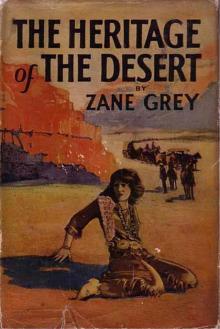 The Heritage of the Desert: A Novel
The Heritage of the Desert: A Novel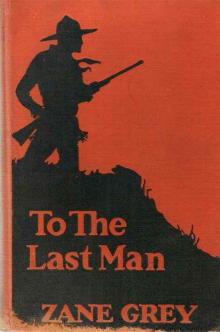 To the Last Man
To the Last Man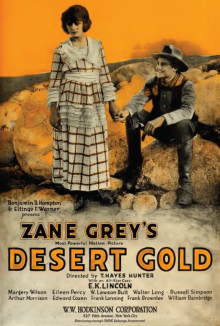 Desert Gold
Desert Gold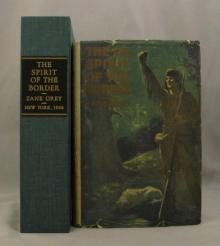 The Spirit of the Border: A Romance of the Early Settlers in the Ohio Valley
The Spirit of the Border: A Romance of the Early Settlers in the Ohio Valley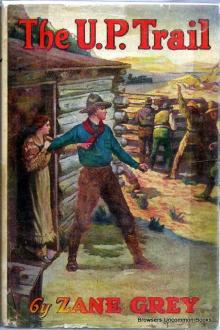 The U. P. Trail
The U. P. Trail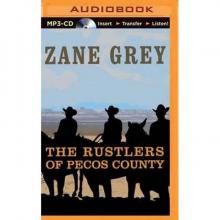 The Rustlers of Pecos County
The Rustlers of Pecos County The Border Legion
The Border Legion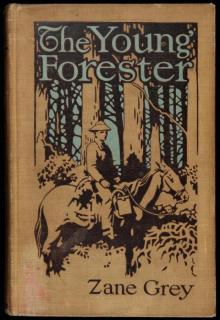 The Young Forester
The Young Forester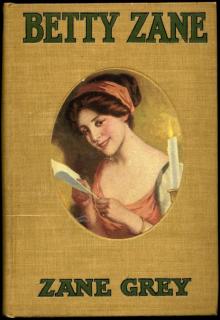 Betty Zane
Betty Zane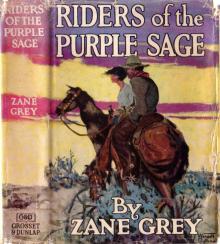 Riders of the Purple Sage
Riders of the Purple Sage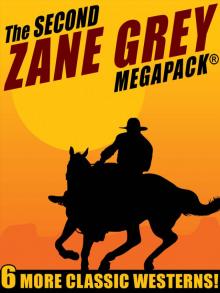 The Second Zane Grey MEGAPACK®
The Second Zane Grey MEGAPACK® The Rainbow Trail
The Rainbow Trail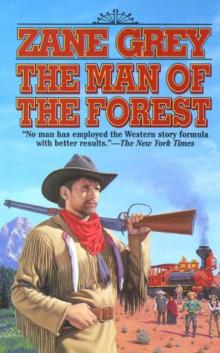 The Man of the Forest
The Man of the Forest The Mysterious Rider
The Mysterious Rider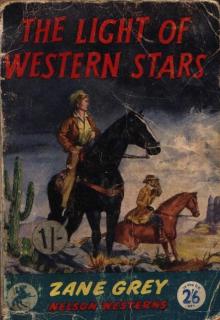 The Light of the Western Stars
The Light of the Western Stars The Last of the Plainsmen
The Last of the Plainsmen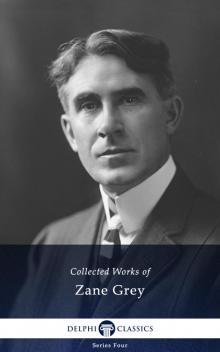 Collected Works of Zane Grey
Collected Works of Zane Grey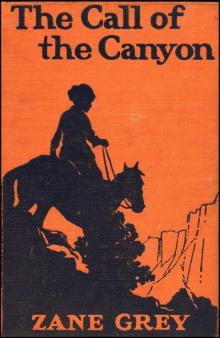 The Call of the Canyon
The Call of the Canyon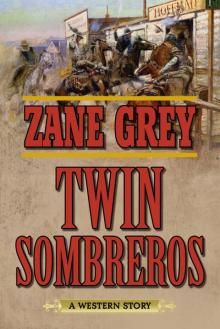 Twin Sombreros
Twin Sombreros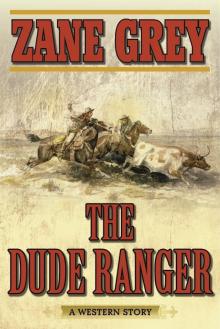 The Dude Ranger
The Dude Ranger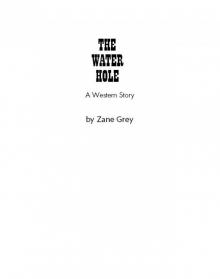 The Water Hole
The Water Hole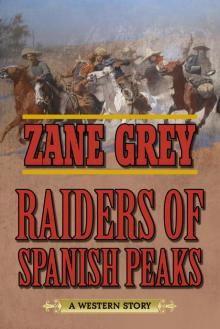 Raiders of Spanish Peaks
Raiders of Spanish Peaks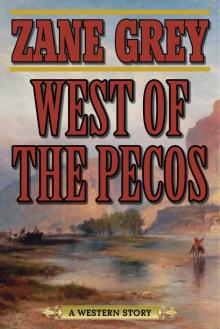 West of the Pecos
West of the Pecos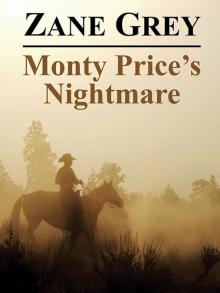 Monty Price's Nightmare
Monty Price's Nightmare Stairs of Sand
Stairs of Sand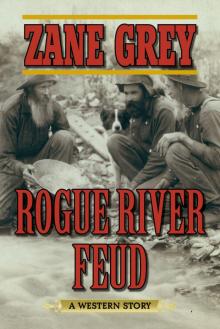 Rogue River Feud
Rogue River Feud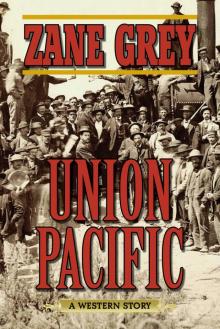 Union Pacific
Union Pacific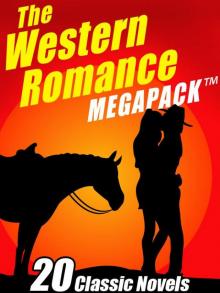 The Western Romance MEGAPACK ®: 20 Classic Tales
The Western Romance MEGAPACK ®: 20 Classic Tales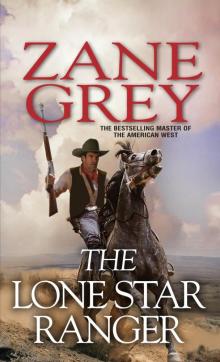 The Lone Star Ranger
The Lone Star Ranger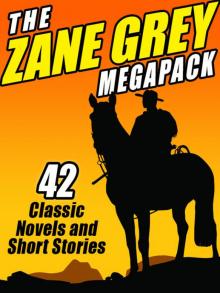 The Zane Grey Megapack
The Zane Grey Megapack Shadow on the Trail
Shadow on the Trail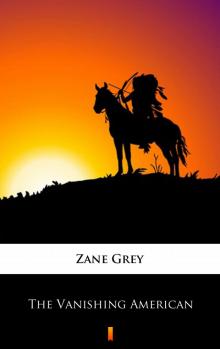 The Vanishing American
The Vanishing American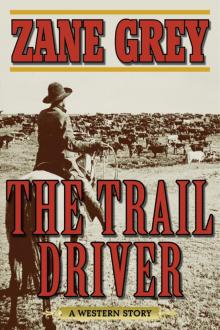 The Trail Driver
The Trail Driver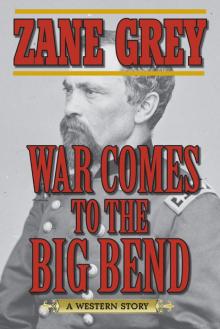 War Comes to the Big Bend
War Comes to the Big Bend The Westerners
The Westerners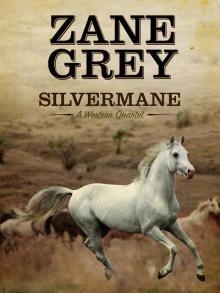 Silvermane
Silvermane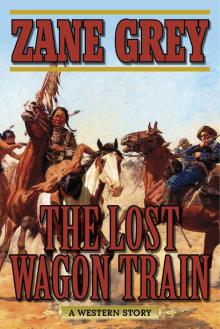 The Lost Wagon Train
The Lost Wagon Train Desert Gold and the Light of Western Stars
Desert Gold and the Light of Western Stars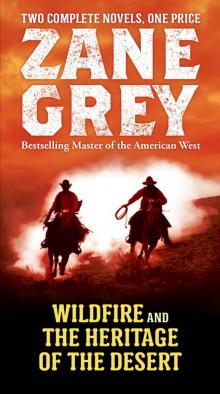 Wildfire and the Heritage of the Desert
Wildfire and the Heritage of the Desert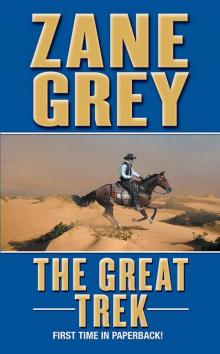 The Great Trek
The Great Trek Cabin Gulch
Cabin Gulch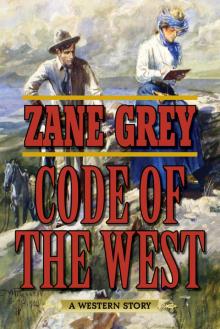 Code of the West
Code of the West Sunset Pass
Sunset Pass Panguitch
Panguitch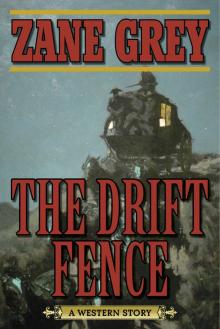 The Drift Fence
The Drift Fence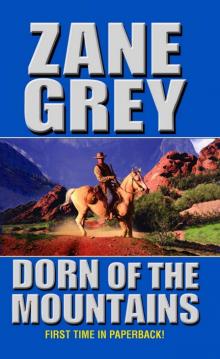 Dorn Of The Mountains
Dorn Of The Mountains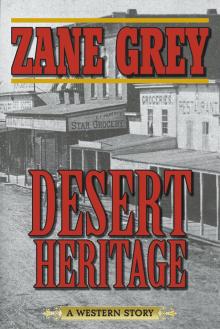 Desert Heritage
Desert Heritage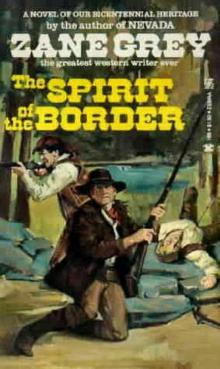 The Spirit Of The Border
The Spirit Of The Border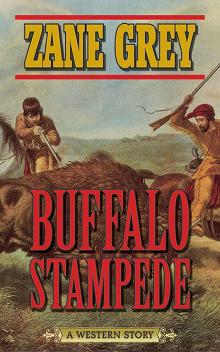 Buffalo Stampede
Buffalo Stampede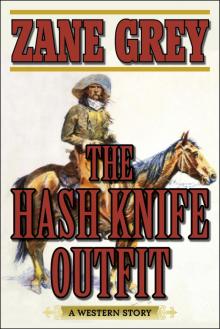 The Hash Knife Outfit
The Hash Knife Outfit The Lone Star Ranger and the Mysterious Rider
The Lone Star Ranger and the Mysterious Rider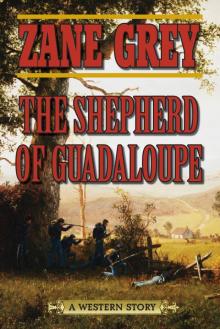 The Shepherd of Guadaloupe
The Shepherd of Guadaloupe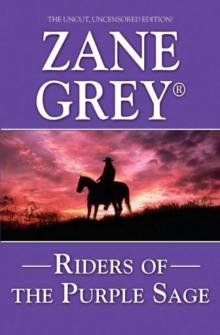 Riders of the Purple Sage (Leisure Historical Fiction)
Riders of the Purple Sage (Leisure Historical Fiction)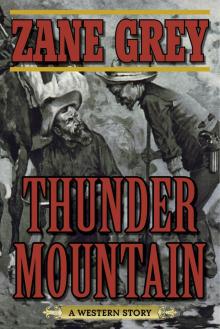 Thunder Mountain
Thunder Mountain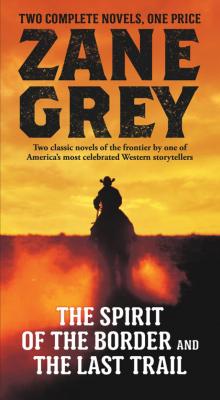 The Spirit of the Border and the Last Trail
The Spirit of the Border and the Last Trail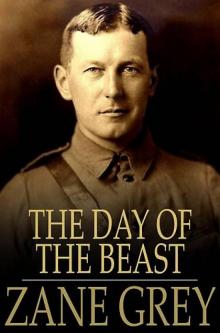 The Day of the Beast
The Day of the Beast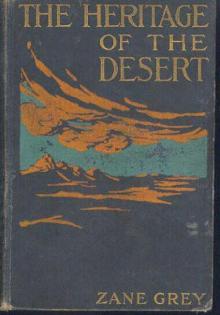 The Heritage of the Desert
The Heritage of the Desert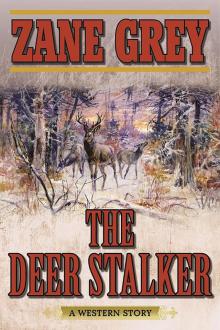 The Deer Stalker
The Deer Stalker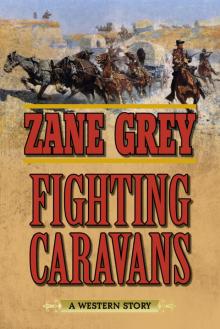 Fighting Caravans
Fighting Caravans